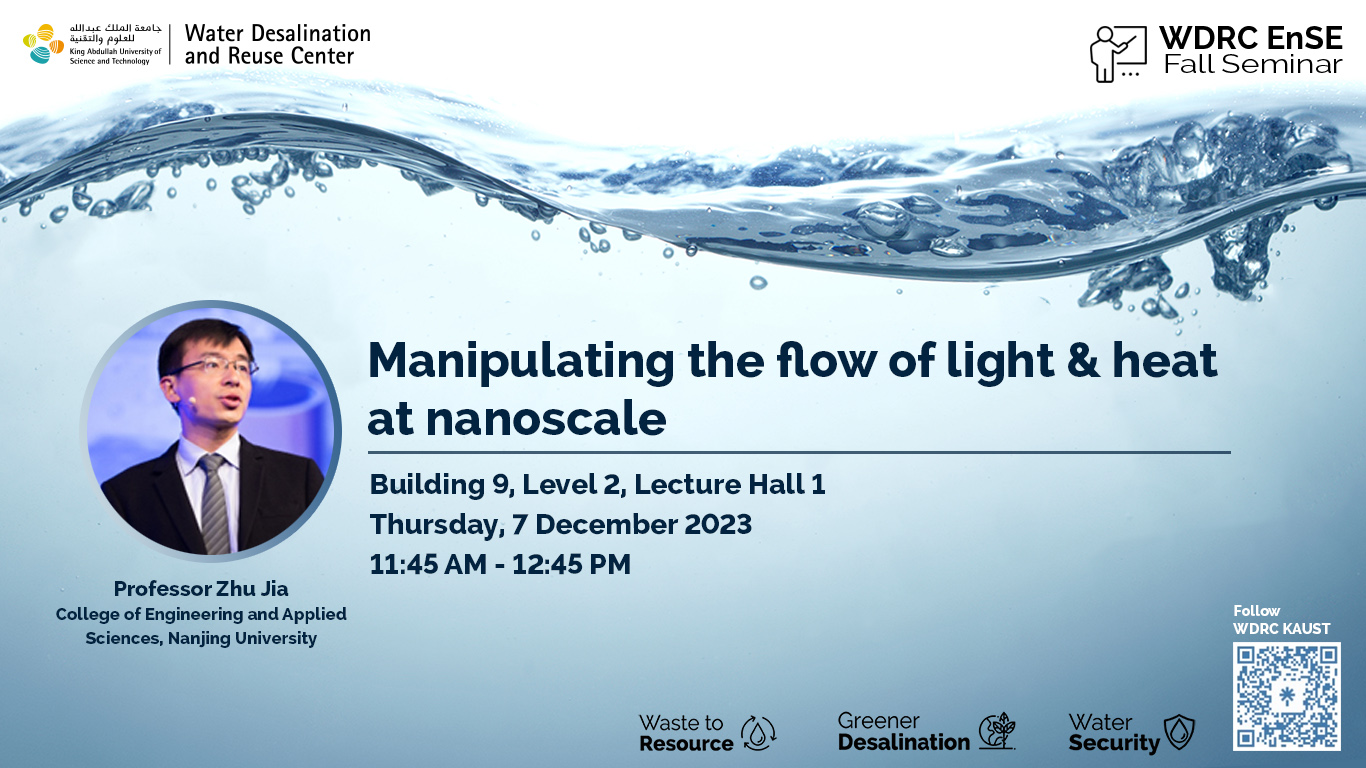



Where: Building 9, Level 2, Lecture Hall 1
Light and heat are the two most common and widely used energy in the society. Nanostructures with carefully tailored properties can be used to manipulate the flow of light and heat, to enable novel devices and functionalities in an unconventional manner. In this talk, I will present two examples.
The first example is about passive cooling. Radiative cooling which sends heat to space through atmospheric transparency window without any energy consumption, is attracting significant attention. For radiative cooling to achieve high cooling performance, it is ideal to have a selective emitter, with an emissivity dominant in the atmospheric transparency window. However, so far scalable production of radiative cooling materials with selective emissivity has not been realized. Here I will present a hierarchical design for a selective thermal emitter to achieve high performing all-day radiative cooling. Moreover, it is revealed that this hierarchically designed selective thermal emitter shows significant advantage if being applied to alleviate Global Warming or to regulate temperature of the Earth-like planet.
The second example is about interfacial solar evaporation. We report that efficient and broad-band plasmonic absorber can be fabricated through a three dimensional self-assembly process. Because of its efficient light absorption and strong field enhancement, it can enable very efficient (>90%) solar vapor generations. Inspired by the transpiration process in plants, we report an artificial transpiration device with a unique design of two dimensional water path. The energy transfer efficiency of this artificial transpiration device is independent of water quantity and can be achieved without extra optical or thermal supporting systems, therefore significantly improve the scalability and feasibility of this technology. At the end, we would like to demonstrate that this type of interfacial solar vapor generations can have direct implications in various fields such as solar desalination, zero liquid discharge, sterilization and power generations.
.Prof. Zhu Jia is a professor at Nanjing University, fellow of Optica and fellow of Royal Society of Chemistry. His research focuses on manipulating light and heat at nanoscale. As a Highly Cited Researcher of Clarivate, he has published over 140 papers, with over 20,000 citations, on prestigious journals such as Nature, Nature Photonics, Nature Nanotechnology, Nature Sustainability, Nature Water, National Science Review, Joule, Advanced Materials. He also serves as the executive editor of Nanophotonics and the editorial board member of Advanced Photonics. Recent honors include: The Xplorer Prize, NSFC Young Investigator Award, OSA Young Investigator Award, Tan Kah Kee Young Scientist Award, MIT Technology Review Innovators Under 35.